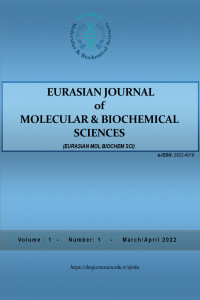Abstract
Triticale (x Triticosecale Wittmack) is a synthetic amphiploid cereal that grows on about 3 million hectares in the world. It is
grown mostly for forage or animal feed, although some triticale-based foods can be purchased at health food stores or are found
in some breakfast cereals. Mature embryos of two triticale cultivars (Ümran Hanım and Melez 2001) were used as the resources
explants. The effects of one auxin type (2,4-D) and three various concentrations, (4.0 mg/l; 8mg/l; 12.0mg/l) callus formation
and plant regeneration were determined. Callus formation values were detected over 85% in three concentrations. In terms of
results, the highest embryogenic callus formation rate was determined 46.91 % at 12 mg/l of Ümran Hanım dicamba. However,
the lowest embryogenic callus formation rate was found with a value of 12.86% in Ümran Hanım's 2,4-D 8.0 mg/l hormone
application. The highest regeneration capacity was determined at 12.09% at a dose of 12.0 mg/l of Mikham 2001 2,4-D.
However, the lowest regeneration capacity was determined at 2.2% at the dose of 4 mg/l of Ümran Hanım 2,4-D. Our results
displayed that auxin type and hormone dosage were very significant on the triticale mature embryos.
Details
| Primary Language | English |
|---|---|
| Subjects | Biochemistry and Cell Biology (Other) |
| Journal Section | Research Articles |
| Authors | |
| Publication Date | April 29, 2022 |
| Published in Issue | Year 2022 Volume: 1 Issue: 1 |


